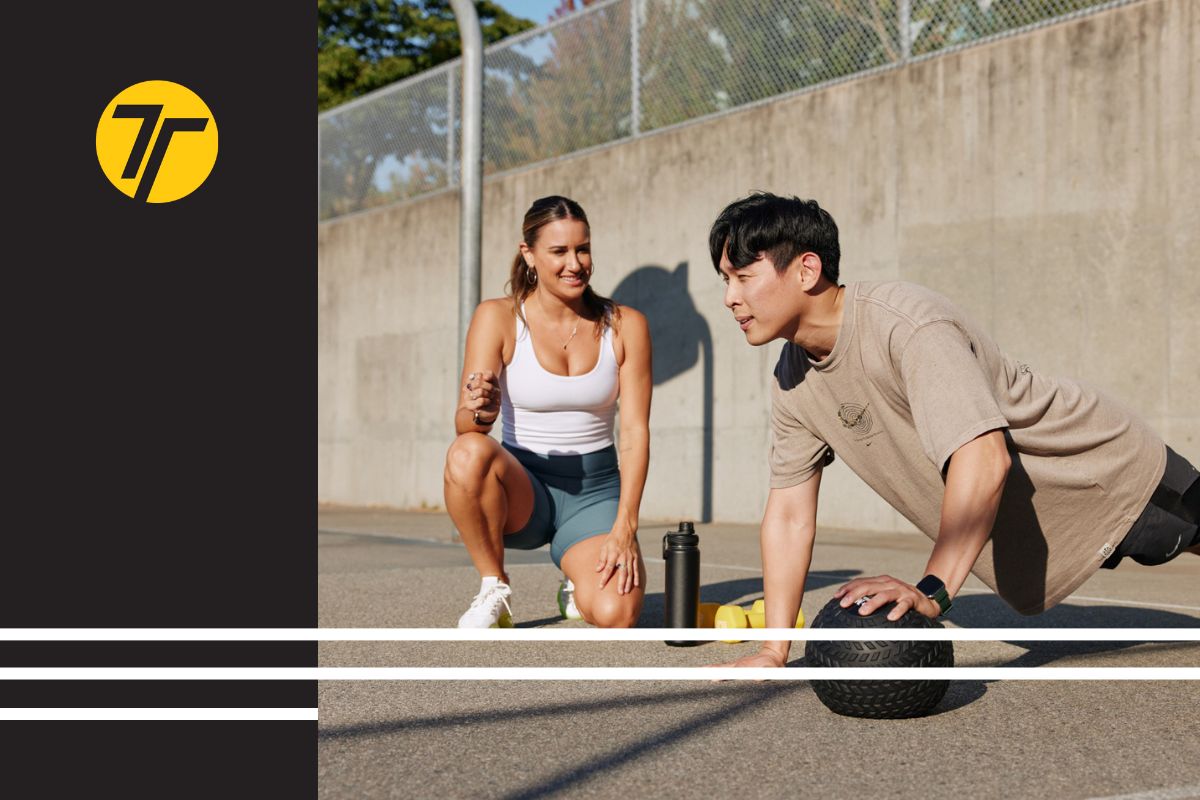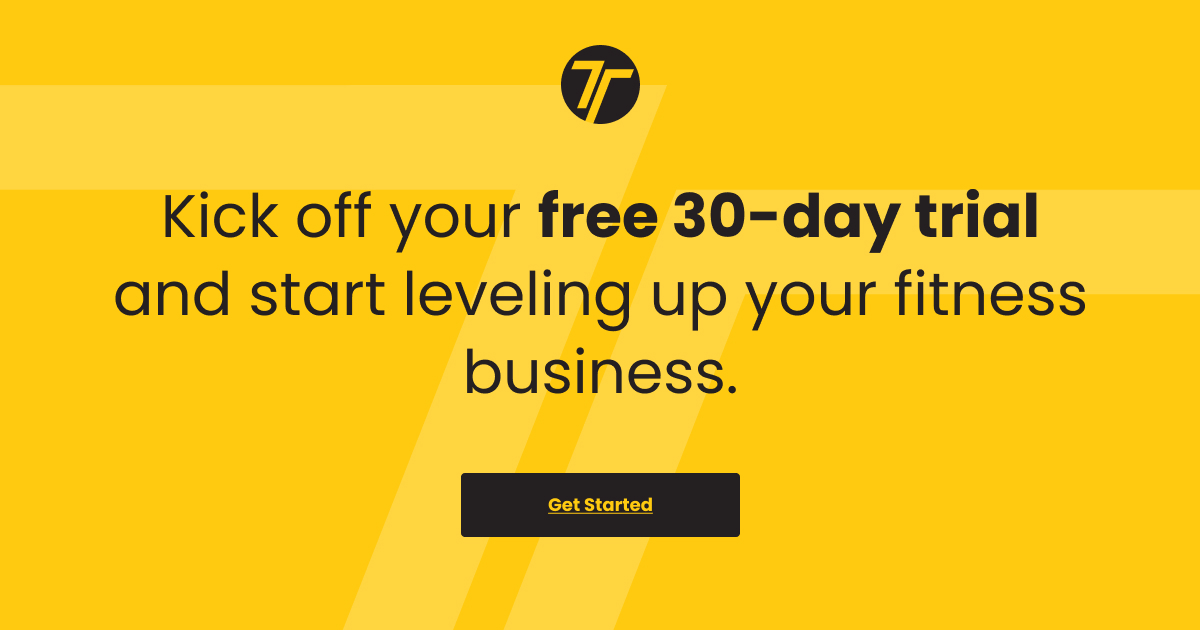
Build a Fitness Business That Sells Itself with Content Marketing
Content marketing is one of the highest-return-on-investment (ROI) strategies available for fitness professionals. It costs less, delivers more leads, and compounds over time. And the smaller your business, the more it works in your favor, because attention, not budget, becomes your biggest asset.
That’s especially true today. Flashy discounts and last-chance sales no longer have the same impact as they once did. Clients are more skeptical, more selective, and more informed. They’re not looking for hype. They’re looking for someone who understands, someone they can trust before they even consider making a purchase.
Done right, content marketing can become a reliable source of leads without requiring a huge following, a daily posting habit, or a significant ad spend. And in this article, we’ll speed track you through content marketing for the fitness industry.
Step #1: Understand What Content Marketing Is
Content marketing is using content — blogs, videos, images, and everything in between — across the web, email, and social media to promote your services. Yes, you’re still promoting. Content marketing done right has business goals. It’s not just a nice-to-have or a battle to go viral.
But it does so differently. It doesn’t chase or shout. It pulls people in — makes them stop, pay attention, and stick around for when you have something to say.
Think of it this way: content marketing helps you pre-sell your service by meeting your audience where they are, giving them value upfront, and guiding them toward action — all before they ever message you.
Isn’t Content Marketing Just Social Media Marketing?
No, and thinking they’re the same is precisely why most fitness content goes nowhere. Social media marketing is the distribution channel, while content marketing is the message, the strategy, and the journey you’re building across all touchpoints.
You can’t run an entire sales funnel on Instagram alone. Social media content is just the entry point, and it does help you get seen, but trust is usually built elsewhere, such as on your landing page, in a one-on-one conversation, or through your long-form content.
Great content follows a marketing funnel:
- Top: Attract new eyes
- Middle: Educate, guide, and differentiate
- Bottom: Convert with direction
But great content doesn’t try to do all three in one post. Each reel, caption, or story requires a single clear objective. Sometimes that’s to entertain, other times it’s to teach. And often, it’s just to drive traffic somewhere else, like a landing page that needs its content strategy to close the deal.
So no, content marketing isn’t just “posting on Instagram.” It’s building a system that connects, guides, and converts, one piece at a time.
Read More: The Ultimate Guide to Instagram Marketing for Fitness Professionals
Step #2: Know Your Audience and Their Needs
Your ideal clients are busy, skeptical, and overwhelmed with advice. They’re scrolling through reels between meetings, Googling “why am I not losing fat,” and half-trusting whatever sounds confident.
This is where your content marketing strategy should begin, seeking evidence on the exact questions they’re asking. Start with their goals and frustrations. Ask:
- What do they want? (Lose weight, get stronger, feel confident)
- What’s stopping them? (No time, confusion, past failures)
- What are they Googling at night?
Use that to create content that resonates with their audience. Make sure you’re posting in the right places at the right time, too! Choose 1-2 channels where your audience spends time, based on their interests, age, and location. For example,
- Instagram & TikTok: Daily visibility & quick wins
- Email: For nurturing and sales
- YouTube: Evergreen search content
- Blog: SEO + long-form trust-building
Read More: Trainerize Features I Love: Messaging, Video, and the Custom Branded App
Step #3: Plan Strategic Content That Converts
If you want your content to convert, it needs more than good vibes and trendy audio. It needs purpose. Every piece of content should guide someone one step closer to working with you, and that only happens when you understand how content drives decisions.
Start with content types that consistently perform in the fitness space.
The best-performing fitness content in 2025 is, hands down, video, including exercise tutorials, short challenges, HIIT routines, and snackable nutrition advice. 93% of Marketers claim that video marketing has become the number one driver of more customers.
Learn More: Video Coaching by ABC Trainerize
Think: high-protein meals, calorie comparisons, or simple healthy swaps — all designed to catch attention while adding value.
Community-based posts, “bad day” check-ins, motivational wins, and even humble fitness brags consistently outperform generic tips. And, as always, putting your fitness spin on trending formats is a smart way to boost reach while staying true to your brand.
Check Out: How To Be a Great Coach and an Even Better Business Owner
Here’s what consistently performs too:
- How-tos (e.g., “3 ways to train around knee pain”)
- Client stories (transformation + mindset shifts)
- Quick workouts (low-barrier ways to get moving)
- Nutrition tips (myth-busting + simple swaps)
- FAQ-style posts (answer the same questions you get in DMs)
Now let’s talk a bit about what in marketing we call the buyer journey and the marketing funnel.
#1 At the top of the funnel, people are just becoming aware that they even have a problem. So your content should speak to struggles and mistakes, the kind they’re quietly Googling late at night.
#2 In the middle, they’re weighing options. This is where your philosophy, coaching style, testimonials, and approach matter.
#3 At the bottom, when they’re close to buying, they need all the deets, what exactly is included in your program, what results you promise, when, and where they can pay for it.
To keep things structured, plan your content around 3–5 core pillars. These are the themes you want to be known for, like:
- Fat Loss
- Strength Training
- Nutrition
But do add to that your coaching approach, for example:
- Fat Loss Without Diet Culture
- Strength Training for Busy Adults
- Nutrition That Fits Real Life
That repetition isn’t dull, it’s branding. And in a space like fitness, it’s also about how you cut through the noise, bust myths, and ensure people get real, helpful information. You can convey a great deal by focusing on a few key topics. And honestly, in this industry, good info can’t be repeated enough.
Step #4: Distribute and Promote Your Content Effectively
Knowing how to distribute your content is the new currency. It’s not enough to post once and hope for reach. You need a system. That means three things:
- Repost and reshape across platforms. One post = multiple formats.
- Chop and test. Break down longer content into shorter pieces and see what lands.
- Run value-first ads. The best-performing ads now resemble helpful content, where you seamlessly integrate your offer. That’s it.
This is what content marketing looks like in 2025: give value upfront, build trust quickly, and then invite the action.
For trainers, this is where things get messy. You’re coaching, programming, managing clients, and now you’re supposed to be a media company too? That’s why the strategy has to be lean. Here’s how to think about distribution through a personal trainer lens:
- Creation is what you already do: answering client questions, giving tips, and sharing wins. Just document that.
- Distribution ensures that those ideas don’t die in just one story or post. Spread them across platforms, in formats that match how people scroll, click, or search.
- Promotion is highlighting the best content, whether through Instagram story CTAs, email sequences, or $5/day ads. Content marketing doesn’t mean never promoting. It means earning attention first and knowing when to plug your offer without killing the vibe.
Step #5: Track Performance and Iterate
Once your content is live, your job isn’t over; it’s just entering the next phase: tracking and adjusting. This is where you stop guessing and start optimizing. You’re not just throwing posts into the void anymore. You’re watching what lands, what gets ignored, and what brings people closer to working with you.
Start with three core metrics:
- Engagement: Are people liking, commenting, replying, or saving? DMs are gold here. If your content sparks honest conversations, you’re onto something.
- Traffic: Are they clicking your link in bio? Visiting your landing page? Downloading the freebie?
- Leads: Are they opting in, booking calls, or messaging you about coaching?
These numbers don’t lie. However, also avoid overcomplicating this. Here are the only three things you need to do:
#1 Pay attention to two types of posts: which one did best, and try to recreate the same thing. Which one flopped even though you thought it would do well? Check and see what happened there. Don’t force yourself, but do try to change the angle or something.
#2 Ask them, “What made you contact me?” and find out what brings people to you so you can do more of that type of content. Also, see where people stop their journey with you — it might be in the DMs or the comment section. Troubleshoot from there.
#3 Use the same simple tools to stay organized, and as few as possible:
- Notion / Google Docs / Spreadsheets – to capture and store
- Canva / CapCut – to create
- Buffer – to schedule and distribute
- Trainerize – to keep everything in one place
None of this has to be complex. But it does have to be intentional.
Read More: 16 Proven Gym Marketing Strategies to Get More Members
Conclusion
Content marketing is a long-term play, but it’s the one that builds trust, generates leads, and compounds over time. The trainers and gyms who win aren’t the loudest or the most polished. They’re the ones who show up with clarity, deliver value consistently, and build systems that do the heavy lifting for them.
And if you’re serious about making content part of your business, not just a chore, Trainerize makes it easier. It’s an all-in-one software solution for fitness pros to:
- Schedule and publish across channels
- Track client engagement from content to coaching
- Automate follow-ups when someone interacts with your freebie or offer

